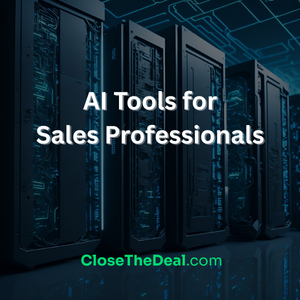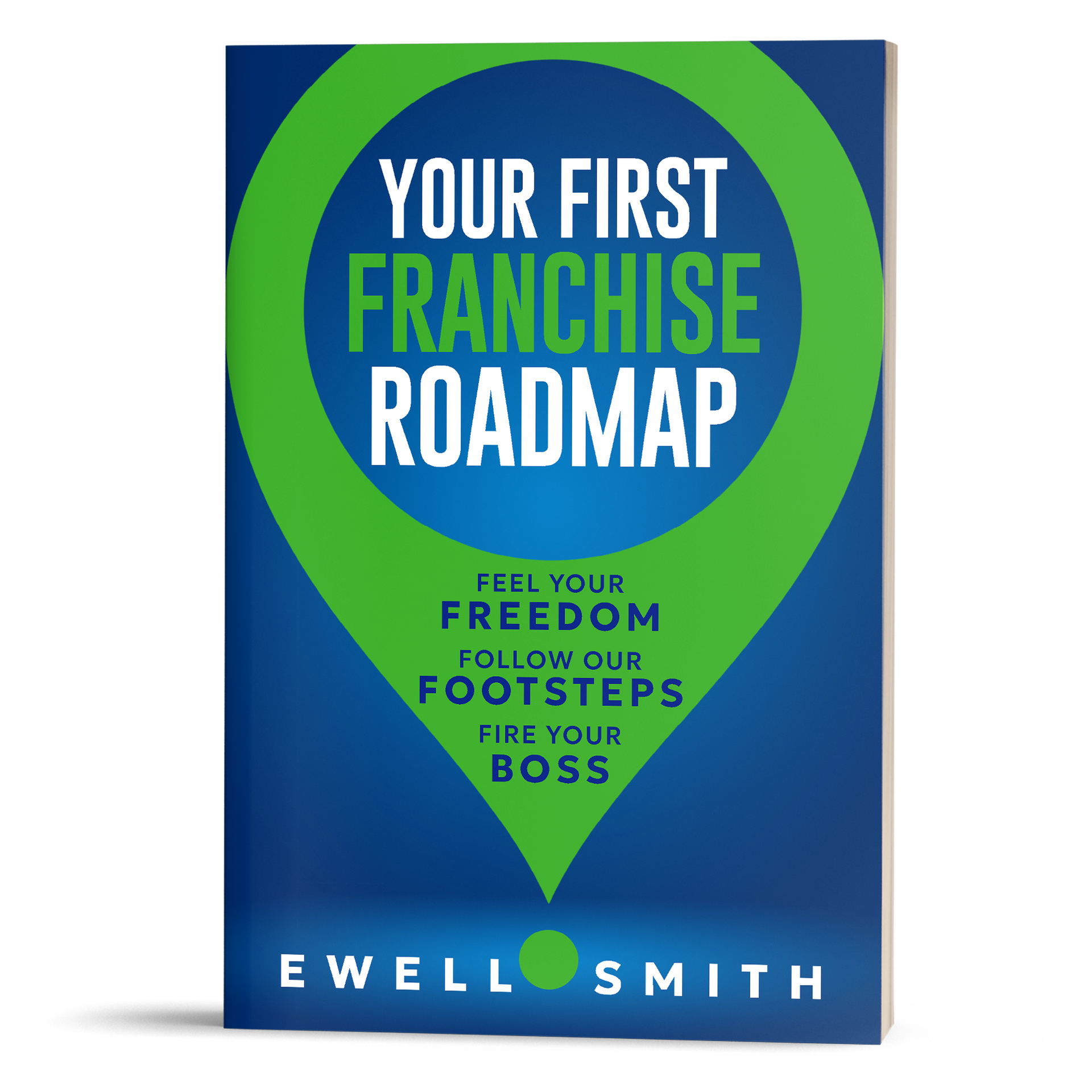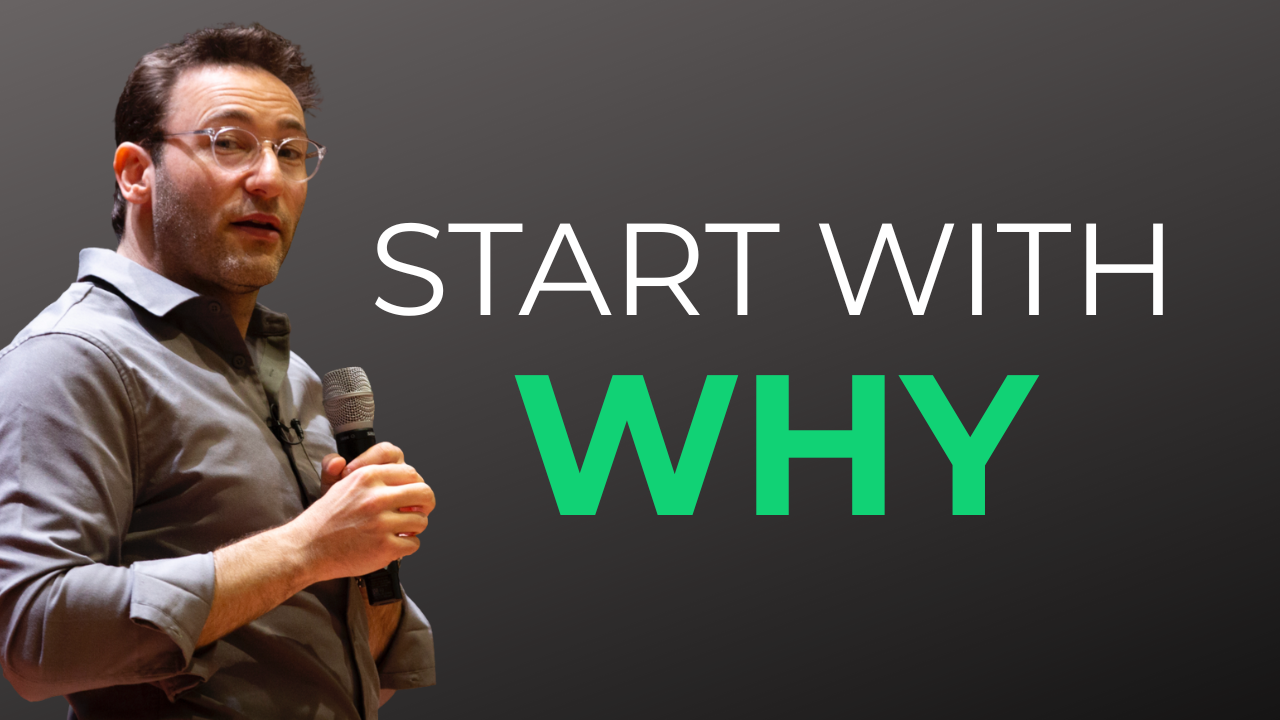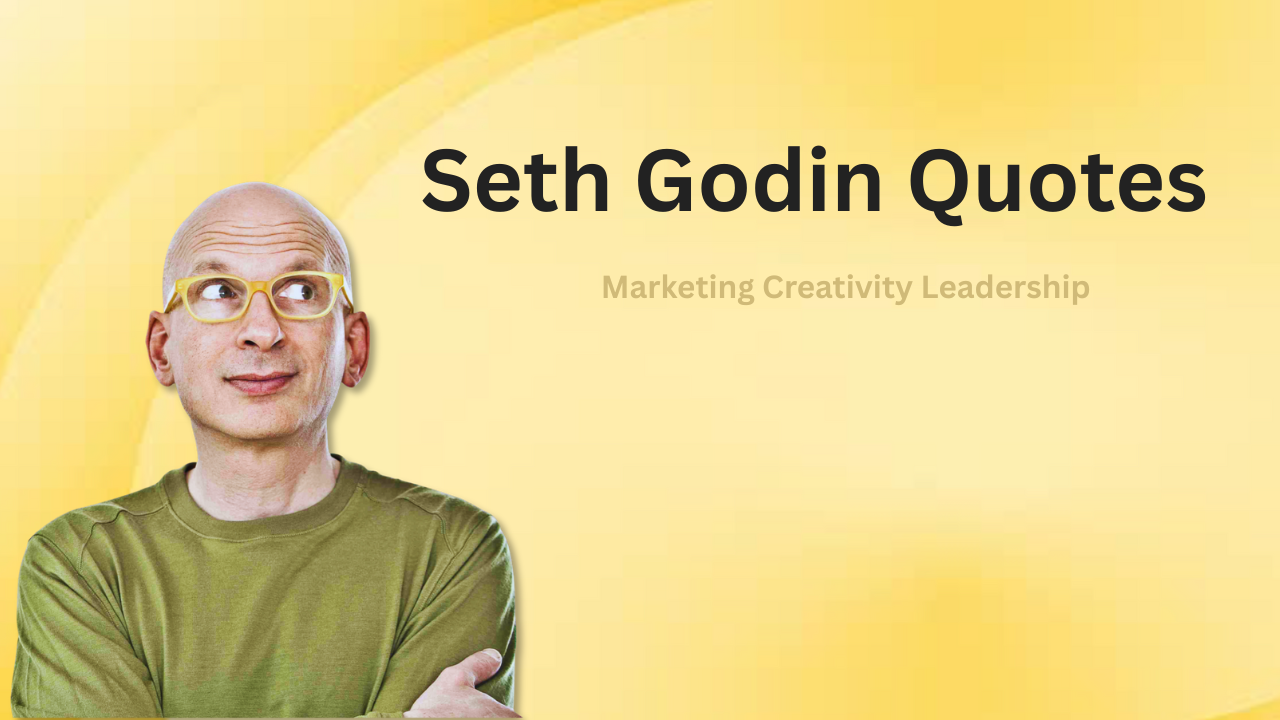July 18, 2023 by Ewell Smith

Eric Law is the CEO of Urban Machine. Did you know most wood goes to the junkyard? Till now, thanks to AI and robotics.
Wood, the greenest building product on earth, just became greener.
Eric shares 5 takeaways from this episode of the Close The Deal. Com Podcast:
- Best restaurant to close the deal in Oakland, Ca
- How Urban Machine solves a problem that's plagued the wood industry for decades
- How Urban Machine is using AI and robotics
- Best immediate use cases to start with - one might surprise you
- How to bring this service to market
Connect with Eric:
https://www.linkedin.com/in/eric-law-innovation/
This episode is brought to you by franchise & funding - find the right franchise for you - that's the one that feeds your soul.
Products we ❤️ for our health:
- Athletic Greens - AGI
- Whoop - get a free Whoop and one free month
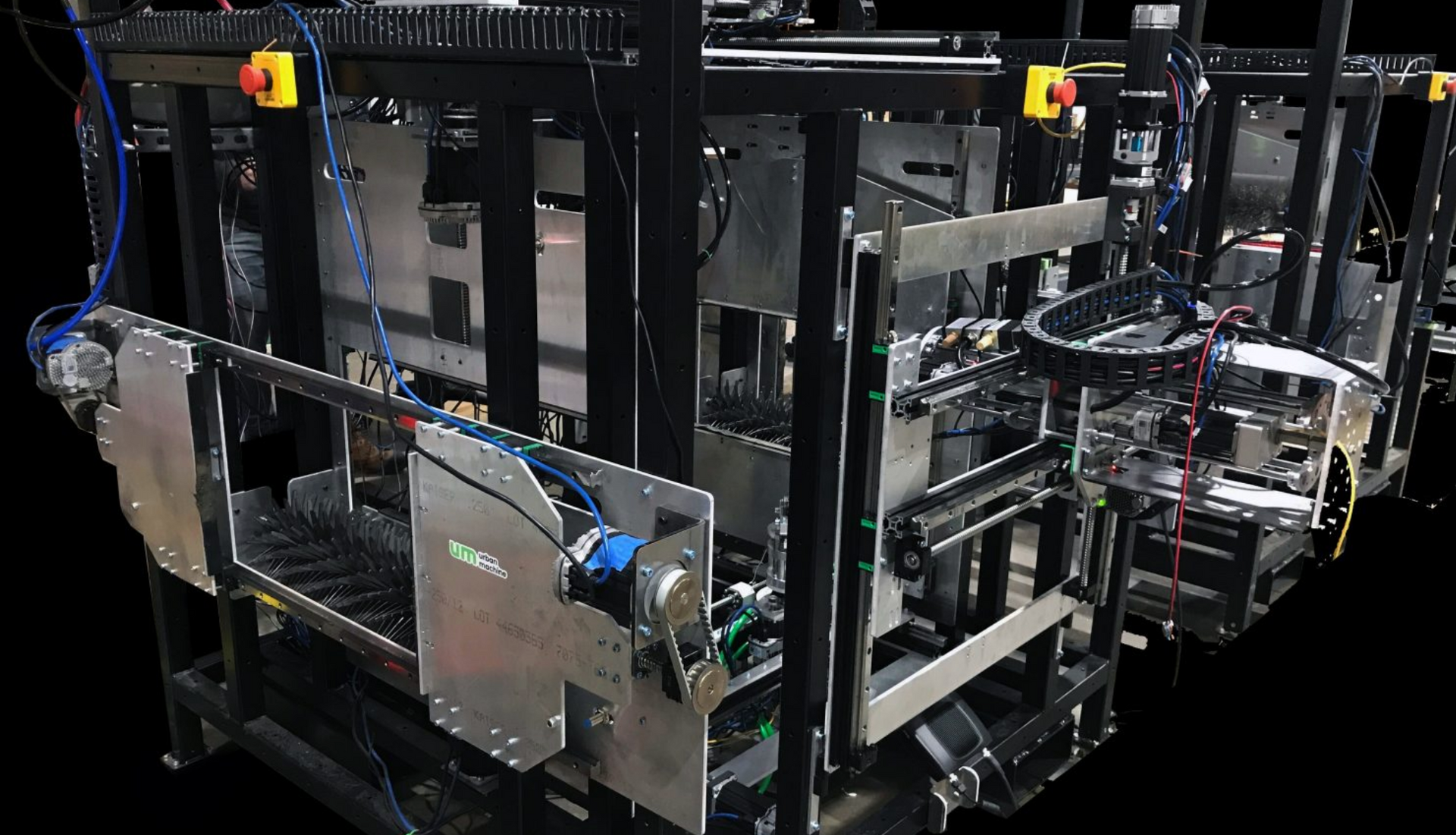
Show Notes with Eric Law - Urban Machine
Eric: A lot of people don't know about this problem. They don't know how big it is, right? A very small group understands just how massive the problem is. So, we spend a lot of time educating folks about it, especially folks that don't have ties to the construction industry to get them on board and educate them about it.
And then the next real challenge for us is nobody had built this technology. Nobody had automated this before and nobody had gone after this particular material, and so we really had to develop everything down to things as simple as…
Ewell: That is Eric Law. He is the CEO of Urban Machine, and his company is solving a problem that has plagued the wood industry for decades. Believe it or not, most wood that's pulled out of an old house or an old building goes to the junkyard. It's not recycled. They're now using AI and robotics to solve that problem.
Now you're listening to the Close The Ceal.Com Podcast. I'm your host Ewell Smith, and Eric is also gonna share with you how he's bringing this product to market at scale. What I mean by that is there's interest, of course, from his side of the country, We're not just talking about his side of the country or the United States, cuz as the word is getting out, the interest is coming in from around the entire globe.
That is how big this opportunity is and Urban Machine solves that problem. Now let's begin the show.
Eric, I wanna welcome you to the Close The Deal.com Podcast. I know you're in Oakland, California. When people come to visit you from out of town, where do you and let's say it's for business and you're trying to, you're trying to get business deal done. Where do you smooth them? Where do you bring them to eat?
Eric: We go right next door to a restaurant called Hidden Spot. They've got great food and because we're in California, we get to eat outside on the patio, enjoy the beautiful weather most of the time, I'd say 90% of the time. And so it's a cool, locally owned business here in Oakland, and it's right next door to our office, so
Ewell: that's very, and it's hidden. Hidden right next…do you provide sunscreen? Cause my very first time in California, I went out to lunch landing on a plane, and it was a two and a half hour lunch outdoors, and my face was toast.
Eric: We do not. The cool part is they just added shade umbrellas to there.
Ewell: Oh, there you go.
Eric: We're stoked for when summer arrives this year. We'll be good to have you there and have you out for lunch and we won't have to worry about sunscreen.
Valuing a great team
Ewell: I love it. So let me ask you a question. What are you grateful for today or from the past that helped you get you where you are?
Eric: Ooh, that's a good one. I would say it's a, That continuous learning and meeting great people. We've put together a phenomenal team here at Urban Machine of Technical Talent and Sales Talent and everything we need to be successful. And I think that's the greatest part about these projects.
And in the past as well I've put together great teams that go out and solve problem. And so I think the simple answer is good people that help you solve the problem. You can never do this on your own.
Ewell: Yeah, I agree.
Eric: Good team. And that's the biggest, I'm grateful.
Ewell: I love it. So, let's talk about the problem. You saw a problem in the marketplace. It was a big problem, and you came up with a pretty unique solution. Talk about what the opportunity was. You saw what the problem you saw, and then you turned it into an opportunity for your business.
Most wood is never recycled???
Eric: Yeah, so the last coming I was out, I built an innovation program where we focused on bringing robotics into construction to augment the craft shortage. We had a huge craft shortage in construction, and so really the only solution there is to bring in machines. We just could not find people to bring in.
And so, I worked with a lot of startups, a lot of different robotics technology on the job sites. And while I was there, I got involved with the sustainability initiative and we started researching the waste streams coming off of our job sites.
And construction generates an environment amount of waste.
When we're demolishing and gutting buildings, it's just large volumes. And when you look at structurally, concrete and steel, both have recycled paths. You can take the steel back to a mill and they'll melt it down and use it again, and concrete becomes space rock. But wood was going to a landfill.
37 million tons! Let that sink in for a second
And it was going to landfill in huge volumes. 37 million tons a year here in the United States goes to our landfills and a little bit for incineration, right? That's a big number. That's about half of what we log from our soft wood forests. And I was looking at, and I started researching it further and talking to some folks in the salvage lumber industry, and they're like, yeah, we can't get the metal out of it.
The reason why we can't reuse wood is all the nails and screws and fasteners that hold everything together are really hard to remove manually. Nobody wants to do that day in and day out. If you've ever pulled nails, it's tedious. It's hard on the body. And having worked with robotics, I'm like, I think this is a robotics problem.
And so that's when I reached out to Andrew, who had done some consulting with us before on some projects and some research, and he is yeah, we can automate this. This is a great use case for robotics, highly repetitive. And away we went. And that was about a year and a half, little over a year and a half ago now.
Ewell: So, does the equipment. First of all, it's a fascinating solution. I love this. And to go to drive home. The point 30, you said 37 million tons of wood. primarily commercial buildings this has come out or is this houses too?
Eric: Everything. Yeah, so it's everything from demolishing an old building to off cuts on a new job site.
How does the Urban Machine work?
Ewell: My gosh. And that's, so now you brought the whole, it, I mean we, the focus is always in the wood industry is always recycling paper.
You brought to the forefront the most obvious thing, the wood itself. I lo I love that. So how does the equipment work? Is it visual where it scans it or is it.
Feel it. How does the robotics know where to go find the nail?
Eric: Yeah. We're very fortunate that computer vision and AI technologies have come down in price and increased in capabilities. So, what we're doing is we're taking pictures of it with these really expensive depth sensing cameras. And then we build a 3D point cloud. So, we build a digital version of every piece of wood we're processing.
And from that digital version of it, we identify where the nails or the staples or the screws are located, how they're orientated. And then that information tells us which end factor is actually gonna go remove it. If we're gonna take out a screw, we use a different tool than if we're gonna take out a nail or a staple.
The nails and staples are great. It's really. It's kinda like a pry bar. It's like a bird's beak, kinda pry bar hybrid thing that goes in, grabs that nail and pulls it out. Whereas the screws, we actually pinch 'em backwards and then we spin them reverse direction on the screws cuz if we just tug on those, they'll shear off.
Most of the screws won't pull out because of the threads. They're really strong and really good holding. And so those, and so that's what we have the two end effectives for. We also have a series of brushes to remove dust and dirt and surface contaminants off the material as well. And so, when we're done with it, you have a clean piece of lumber that's ready to go back to the construction industry.
So mill it, cut it, clean it, whatever you wanna do with it.
Ewell: If it does shear off, does the nail have to come out if it's subsurface below the surface, or is it, or I'm sure the specs that you make sure you hit. does that work?
Eric: yes, we gotta get it metal free because we're not, we never know what the customer's gonna do with it. If you're running a piece of wood through a planer and it hits that nail, it's gonna do some damage to your planer blades. So, our last step is a metal detector to make sure we got it. And so, if it flunks that test, we'll send it back through.
And if that nail that screws below the surface and we can't get with our pickers, then we'll actually slice out that piece of wood.
Ewell: Oh, wow. Okay.
Eric: Rather have two short pieces of wood than one large one with a piece of metal in the middle of it.
Ewell: That makes a lot of sense. So, what was the process starting this? How do you even begin cause there's so many variables. You got beams that are square, two by fours, two by sixes. All these different shapes and sizes. The software just makes envelope around it and scans it is.
Is that how it works? Does it matter the state shape and size?
Eric: Yeah, so the nice thing about dimensional lumber is they're all a rectangle or a square some shape in terms of cross-section, right? So, we've got some pretty good consistency there. And then when we looked at the different dimensions that have been sold a two by four various dimensions of it over the years, but is the number one size material that everybody consumes.
And then we started to take a look at how big does this stuff get, right? What's the common sizes? And so really up to about six by 8 is where it starts to peak off and become real niche dimensions. And we're doing solid lumber and we're also doing glue lambs as well.
Ewell: Oh,
Eric: And so, we started visiting a lot of demolition sites, talking to demolition contractors, collecting sample material from the different projects to understand the different orientation of fasteners, different types of fasteners.
And it starts as a research project, right? Trying to understand the problem deeper and learn more about it. And then once we had a bunch of data, then my co-founder started building a mockup and they said, okay, let's test this with cameras, right? Can we take pictures of this and have a software algorithm go do it?
And so our first prototype was actually about the size of my desk and it could actually shoot nails out of a two by four. It was a pretty cool little system, but that essentially proved that, hey, the technology's there, we just gotta refine it and go faster and increase the volume. And so that helped us raise some money, some from some investors.
And then we started growing the team. And then we proved it out at full scale. Our third prototype was about 40 feet long. And we could run a 20 foot piece of material through it and then clean it all and automatically remove the fasteners and hit the metal detector. And then once we proved that we could do it at full size, then it's okay, let's go build a production unit.
And so that's what we're doing today.
We're building our first production unit. And that unit's gonna be mobile. So, imagine these machines are mounted on flatbed trailers and we go park at a job site and in one end of it, you feed all this dirty lumber that's full of nails and metal, and out the other end comes clean lumber and you load it onto a flatbed truck and you ship it off to the customer.
Ewell: And you mentioned glulam beams, that can get pretty sizeable. And and for people listening to the show, a glulam beam, if you go in an old church a beam with a lot of depth, it's a lot of times two by fours or two by sixes or two by eights that have been compressed together with glues.
Am I describing that right?
Eric: That is correct. It's an engineered product and it's all those boards are glued together to make a really strong, very rigid structural member.
Ewell: Does the glue affect scanning in any way?
Eric: It does not, the glue does not it, it does limit our uses. Once you glue a material, most of those glues are petroleum products. So, some, there are some applications where you can't reuse that glue lamp because of petroleum, right? You can't compost it and turn it back into mulch. But we believe that it should be reused for structural.
Ewell: Yeah. You give it you're giving it a purpose that it otherwise would never have you .
Eric: we're gonna x-ray it, we're gonna scan it, make sure it's structurally intact and still rigid. Try and determine a structural rating for it, and then put it back into another building. The last building it came out of, it wasn't falling down or failing, so it should be good to go in another building.
Ewell: All right Eric, I wanna take a break right here. We're gonna come right back and then we're gonna go into how you developed this to get it ready to go to market and how you're bringing it to market, and any challenges that you came. Cause no, nothing starts easy, right?
So hang on one second and we'll be right back.
This episode is being brought to you by franchise and funding.com. Now look, if you're sick and tired of being sick and tired of not controlling your own destiny, well guess what? You've got options. Check out franchise and funding.com, franchise and funding.com. Now let's get back to the show.
Eric, I wanna welcome you back to the show. This is fascinating. I go back you got me at 37 million tons, and you talk about everybody's so focused on the environment and recycling.
It is probably the greenest form building. There is for starters of everything you've mentioned when you're talking about steel and concrete, but now you bringing it to a whole other level, making sure any materials that come from an old building or recycled and used, what challenges did you face?
I guess what were the biggest obstacles to actually develop this and then. What were the big significant challenges to overcome, to begin to say, okay, we're ready to go to market.
The biggest challenge getting this going
Eric: Yeah, probably the first one is a lot of people don't know about this problem. They don't know how big it is, right? very small group that understands just how massive of the problem this is. So we spend a lot of time educating folks about it, especially folks that don't have ties to the construction industry to get 'em on board and educate 'em about it.
And then the next real challenge for us is nobody had built this technology. Nobody had automated this before and nobody had gone after this particular material, and so we really had to develop everything down to things as simple as rollers, right? When you're moving lumber that's got nails in it, you can't use a solid roller.
You can't use a standard conveyor belt. And so we actually developed our own rollers to handle this material. And so credit to our engineering team just they understood the challenges. They dug into it, they ran into roadblocks, and then they developed new solutions to solve it. And so in a year and a half we're on our fourth iteration, they've been screaming right along.
And doing a great job. And so you got the hardware aspects of it, right? How do you move, handle this material? How do you remove the fasteners from it? And then the software side as well. Nobody's ever written an AI algorithm that's trained off of lumber full of nails. We had to have our own data set.
We had to source material from it. One of the easier parts is sourcing material. The demo contractors we're working with, they're like, how many trucks you want? We got a lot of it, right? They're just like, tell us when and where you want it, and either pick it up or we'll deliver it and it's all yours.
So that's been awesome.
That's been a huge help getting lots of material to test and research understand it. They've let us onto their job sites to see how they demolish buildings because we're changing. What is currently a waste stream that they have to pay for? The demo contractors pay for trucking.
They pay tipping fees to get rid of this material, and now we're coming along and say, Hey, we wanna turn this into long term, hopefully a revenue source for 'em. Initially we'll take it for free, which is a financial gain for 'em, and then we're gonna turn it into a revenue source, which will help 'em increase the volume they reclaim from the projects.
When will this go to market?
Ewell: Is the product ready to go to market right now, or is it still in development?
Eric: It's still in development today. And we'll really spend this year in field trials and testing out in the field. And then 2024, we'll have a product ready to launch to the market.
Ewell: And that's what you envision, is it being on the back of a flatbed truck. How big of a truck is it? 18 wheeler sized truck or like a
Eric: oh yeah,
Ewell: Really 2 40 foot, 20,000 pound rated triple axle trailers. These things are big. They're behind me here in the warehouse. Yeah, this is not a small operation, so we're gonna go to large job sites. Think about big office buildings, warehouses, like that.
Will, will it work? Will it work for residential or will it be out of scale for residential?
Eric: It will, we'll just have to operate at collection points. We can't roll into a residential neighborhood with this footprint. And most residential contractors are small loads, right? So then we'll work as central collection point for those. And we're starting to work with some kind of wood warehouse folks, government agencies that wanna see this material reclaimed.
Ewell: There's grants for this. Absolutely. This is fascinating. Okay, before we get to the marketing, cuz this is part of the marketing to get the word out, but educating people, what's the response? To the industry. Obviously builders want to give you the material cuz they just wanna get rid of it.
How is Urban Machine marketed?
What about, what is the education process on this? And this is probably, it folds into your marketing, but for the basic part of educating people on it, conferences, shows what how do you go about this?
Eric: So we're doing a lot of podcasts like this one. We're doing webinars we're doing lunch and learns with the architects. One of the groups we're trying to really engage is the design community. Cuz the design community really wants to specify the material. But in the past the challenge they've had is reclaim lumber has been really niche product, been pretty expensive because of the labor to go into it in the small market.
And so now we're going out and educate 'em and saying, Hey look, you know that reclaimed lumber you wanna use? It's gonna be available in large volumes at a lower cost. Our goal to
Ewell: that's big problem you're solving. Wow.
Eric: so this way they don't get the contractor going back, Hey, I gotta way to save money dear client. Use virgin lumber instead of this reclaim stuff.
And it cuts 90% off of that particular project. So, by increasing the volume, making it highly available, then it can be sourced not just in like architectural facades, but then some of the engineered lumber manufacturers can start to consume it. If we can generate consistent volumes, then you can use in C L T, you can use it in glulam, opens up a whole new host of solutions that can use reclaimed lumber.
Ewell: What about floors?
Eric: Absolutely.
Ewell: Okay, so planing floors. Yeah. Yeah, that works fine. Okay.
Eric: You can definitely rip it into flooring planks, and away you go.
Ewell: That's awesome. So, what do you see as the biggest potential market? If you were to rank them like 3, 2, 1. For use cases where you can probably see the most volume coming from y'all.
Eric: Yeah so on the source side, it's definitely those commercial buildings.
Ewell: Okay?
Eric: And then on the customer side, it's definitely the building industry. The building industry consumes way more wood than the furniture industry. When you look at volumes, especially the wood we're sourcing, right?
Your soft woods, your dug furs and pines.
And so really we wanna focus on sourcing it from that building industry and getting it back into those buildings.
Ewell: Okay.
Eric: it may go back in as just plain lumber in like a prefab building, or it may be going to like an engineered product like I was mentioning, like CLT, or Gula or LVLs or any of those engineered products can source it as well.
Ewell: And. Your market. When you're speaking to the architects to educate people, how are you getting, is it primarily through trade that you're going through to get it into the marketplace? Or is there a consumer face consumer piece to this?
Obviously the a show like this reaches consumers both, but how, what is the tactics, your primary tactics for getting this into the marketplace?
Eric: Yeah, we're predominantly b2b as our target. But we end up educating a lot of consumers as well, because a lot of 'em are like, wow, I'm really interested in this and I happen to know an architect over here. Or I happen to know somebody over here. Most consumers also know a business side of the world or work for somebody.
And so we're doing a lot of evangelizing to reuse people salvage lumber folks, virgin lumber folks because really it's just a big education play at this point. We're all, we build the technology. We got, we educate everybody, and then when we start doing the mass production, then we can start selling the truckloads of material and into it.
And as we spread regionally we can do that. We're very focused on Northern California right now. Obvious reasons we're based here, and that's where the trailers will be for the next year or so. And then we're gonna spread in 2024, we'll start to expand our geographic focus, so we'll start to deploy trailers in different markets across the country.
Ewell: There certain trade associations you work through for your product to get it out into the marketplace.
Eric: We're exploring that right now. We haven't gotten any relationships directly with it. We've got some trade shows coming up the Mass Timber Conference in Portland that team. We've got the what's the one in DC coming up? Yeah, international. I W B C. It's in DC coming up end of this later this year.
So, we're starting to create those relationships with those organizations.
Ewell: So you're blue sky. You have the world of opportunity globally. Really?
Eric: And everybody loves it. We've got people reaching out to us from Australia and Hawaii and Europe, and they're like, how do we get ahold of this technology? Which is great to see people wanting the technology before it's ready. That is nice to see.
Ewell: That's amazing. That's a great problem. I love it. What would be the takeaways for people to see? So, you're educating the general public here and of course this will get to some of the builders and so forth that would be, use this product. Where do you see it going first? Is there one particular market you're gonna go to first that wanna get this, that way you, where the use case will be, where you can start just demonstrating and proving it out real quick.
The first two use cases Urban Machine is targeting
Eric: Yeah, so we've got two use cases we're proving out. One is with the furniture industry, so we've got some furniture folks.
Ewell: I wasn't even thinking that.
Eric: Yeah, that, and normally they don't look at softwoods, right? Most furniture is a hardwood material, but because this is aged softwood, it's much harder than it is when it's virgin and it's got a beautiful color to it and it's got a great story behind it,
And so, what they're doing is they're looking at it and we're doing some test sales and some test products with these companies as a way to show, hey, here's this premium product, right? Here's a high value product, and it's got a story behind it. This bookcase was made here and the wood came from this particular building down the street or this area.
Ewell: Gotcha.
Eric: So that story rings a lot with people and users in the buildings. And then the other use case we're doing is the full circular approach where we work with a client who's taking down a building, we clean up the material and then that same client uses it in the new building. So, it's not going a long distance.
We're not shipping it around the globe. It's staying locally sourced locally, processed locally, and goes back in that new project. And so hopefully this summer we'll have that project kicking off and we'll be able to share more details on that. We've got our first client lined up to do that where they're stockpiling the material right now.
Ewell: I'll ask one more technical question what about coding? Two by fours got different ratings for, or two by six has different ratings. Do you have to go back and have the inspected to make certain ratings or if it was a certain dimensional, the piece of lumber that is gonna stay the same once it's cleaned up.
Eric: Yeah, so it depends on where you are. So, Oregon and Washington have updated their codes to say, hey, if you've got a reclaim two by four, that was came out of a building, it's automatically by default to number two.
Ewell: Okay, so it stays the same. All
Eric: It stays the same for those, the rest of the states, you do have to get 'em regraded.
There are folks that will do that, where they'll come out and grade a batch of reclaimed lumber and say, Hey, this batch is a number one, number two, based on the quality of it. So that's there. The glulams don't have that. The gold lamps, we're doing some research to see if we can develop that process.
Right now, it's only available for solid lumber.
Ewell: Okay, so where can people, so to add people to your waiting list,
Eric: Absolutely.
Ewell: your book of business that you're building quickly, where can people find your product? What's the best place for them to learn more?
Eric: Absolutely hit up our website, urbanmachine.build is the best place. And then follow us on LinkedIn for updates. We do all of our posts on LinkedIn, on the progress of the machine. We share videos, stories of early adopters that we're working with is our best stream. So, follow us there.
And those are probably the two best avenues that are available today.
Ewell: Fantastic. Eric, this has been great. I love what you're doing. I think you're solving a massive problem and it's gonna be really beneficial to a lot of people. So, thank you for your work, for starters, and I cannot wait to see where this goes, but you and your business and your company and all those that you serve, that's great.
Eric: Awesome.
You very much for having me on the show this morning. This was a pleasure to chat with you and looking forward to more.
Ewell: Absolutely.
That is a wrap with Eric, and if you are a contractor architect or engineer, make sure you check out urbanmachine.build and what a win for the wood industry, the wood community. For us as consumers and for the technology that's making all this possible.
And I wanna thank you for listening to the Close The Deal.com podcast and being part of our community.
Make sure you share the episodes. We appreciate that as we build our community. And we'll be back real soon with another great episode.
Talk to you soon. Make it a great day. That's my ask of you always to make sure you are intentional and make this a great day.
Subscribe
Top Sales Training Categories
Sales training programs organized by industry, so you can compare providers that understand your market, sales cycle, and buyers.
Top SaaS Sales Training Programs
Top FinTech Sales Training Programs
Top HealthTech and Medical Sales Training Programs
Top Manufacturing and Industrial Sales Training Programs
Top Real Estate and Mortgage Sales Training Programs
Top AI Tools For Sales - 2026
No fluff. No sponsored rankings. Just tools mapped to how sales actually works today.
Top AI Sales Prospecting Tools
Top AI Email and Outreach Tools
Top AI Conversation Intelligence Tools
Top AI Sales Coaching Platforms
Top AI CRM and Sales AnalyticsTools
Top AI CRM and Sales Analytics Tools
Laid off?
Not valued?
Ready to exit?
Discovered ageism
is real?
Be The Boss.
About the Author
Ewell Smith is the publisher of CloseTheDeal.com and host of the Close The Deal Podcast, where he speaks with founders, sales leaders, and operators about building effective sales systems and scaling revenue. His work focuses on practical sales strategy, marketing execution, and the mindset behind consistent growth.




